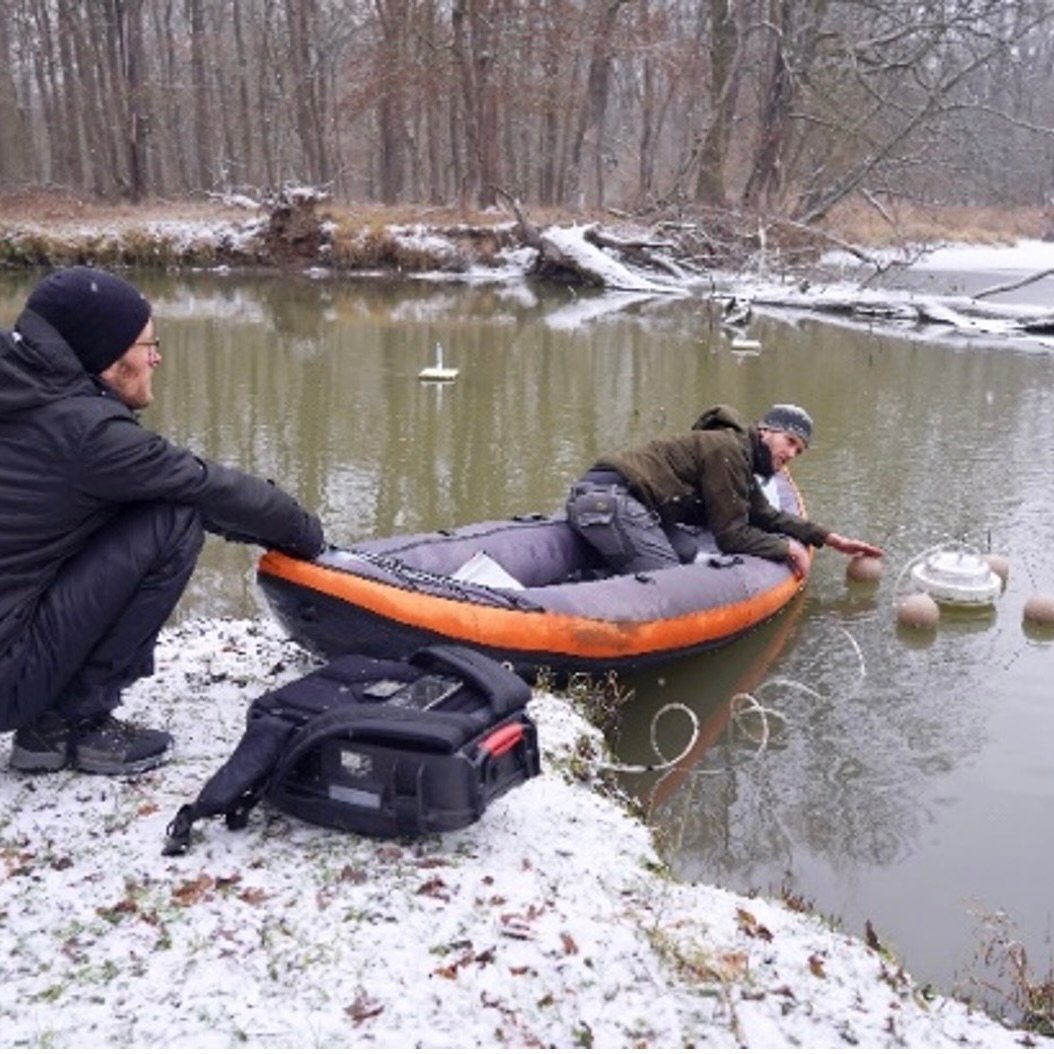
Adam Bednařík
Organization: Global Change Research Institute of the Czech Academy of Sciences (CzechGlobe)
Years Using Picarro: 2 Years
Analyzer(s) Used: G4301 GasScouter, G2201-i
Characterizing the Spatial Variability and Environmental Drivers of CH4 Ebullition
About My Research
My research focuses on the quantification of methane (CH4) emissions, highly potent greenhouse gases, from natural sources. Natural sources, mainly wetlands and inland waters, comprising lakes, reservoirs, streams, and rivers, are responsible for almost half of the global CH4 emissions. These emissions are characterized by high spatiotemporal variability and the existence of several emission pathways bringing a large source of uncertainty to estimates of CH4 emissions. One of these CH4 emission pathways is ebullition – the escape of CH4 as gas bubbles directly from the sediments through the water column to the atmosphere. Despite the potentially large contribution of ebullition to total CH4 emissions, it is very poorly constrained in recent global CH4 emission estimates from streams and rivers, mainly because the ebullition measurements are too scarce to upscale ebullition for global estimates or to understand their fundamental drivers. Therefore, my research turns in this direction.
With my colleagues, we previously found that small river impoundments can significantly increase the importance of ebullition in river CH4 fluxes by mainly altering the sediment characteristics, while we observed that ebullition accounted for 96% of the total CH4 emissions upstream of the impoundments. More recently, we showed that the understudied CH4 ebullition might exceed CH4 diffusive fluxes in streams and, therefore, needs to be accounted for to obtain accurate total CH4 emissions estimates from streams. Additionally, we underlined the key effect of temperature on the seasonal changes of CH4 ebullition in streams and identified several factors driving the spatial variability of CH4 ebullition allowing us to model ebullitive fluxes in lowland streams with homogeneous sediments, as one of the common stream types, with high reliability.
We aim to extend our measurements to different categories of streams to further characterize the spatial variability and environmental drivers of CH4 ebullition. Deciphering the variability and contribution of different emission pathways (diffusion and ebullition) will enhance the knowledge of how streams contribute to natural CH4 emissions, what drivers are responsible for their dynamics, and what will be their development under climate change.
How Picarro Analyzers Helped
We use Picarro G4301 GasScouter for two different applications – (1) field and (2) laboratory measurements.
-
In the field, we connect GasScouter to our self-made floating chambers for measurements of CH4 and CO2 diffusive fluxes through the air-water interface. Here, the sample flow rate helps to properly circulate the air closed in the system and get a reliable flux rate during a few minutes of measurements. Thanks to the robust and handy GasScouter’s construction and low weight it is easy to carry and lay it anywhere. We take the analyzer in the kayak or we extend the connection between the chamber and analyzer with longer tubes and measure from the stream bank. We use Picarro GasScouter G4301 intensively for field measurements for two years almost every week including several night sampling campaigns and also winter measurements in case the water surface was not covered by ice. We always finished our sampling days with all necessary data gathered and without any serious malfunctions that could not be solved directly in the field.
-
In the laboratory, we use GasScouter for measurements of discrete gas samples of small volumes using the closed-loop, which we constructed and installed in front of the inlet of the analyzer. Thanks to the considerable measurement range of the GasScouter we are able to determine the CO2 and CH4 concentration in our samples of water headspace (samples of air shaken out in situ from water and stored in pre-evacuated glass vials to determine the amount of CH4 dissolved in surface water) and gas bubbles from water sediments containing up to 80% of CH4.
Recently, we have started to analyze our first samples (same as what we analyze with GasScouter) with a Picarro G2201-i analyzer equipped with a Small sample introduction modul 2. We aim to identify the changes in the isotopic signature of CH4 to get a better process understanding of the dynamics of CH4 production in sediments, CH4 oxidation, and its fluxes to the atmosphere. But we are now in the phase of optimization of methods and interpretation of the first sets of results.
